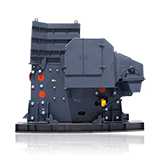How to Install a Jaw Crusher Properly?
Jaw crushers are vital pieces of equipment in various industries, including mining, construction, and recycling. They are used for crushing large rocks and materials into smaller, manageable sizes. Proper installation of a jaw crusher is crucial for ensuring optimal performance, longevity, and safety. This article provides a detailed guide on how to install a jaw crusher correctly, covering essential steps, best practices, and common pitfalls to avoid.

1. Pre-Installation Considerations
Before installing a jaw crusher, several pre-installation considerations must be addressed:
1.1 Site Assessment
Conduct a thorough site assessment to determine the best location for the jaw crusher. Consider factors such as:
- Accessibility: Ensure that the site is easily accessible for maintenance and operation.
- Space: Ample space should be available for the crusher, as well as for feeding and discharging materials.
- Ground Stability: The ground should be stable and capable of supporting the weight of the crusher and associated equipment.
1.2 Equipment Selection
Select the appropriate jaw crusher model based on the specific needs of your operation. Factors to consider include:
- Material Type: Different jaw crushers are designed for various materials (e.g., hard rock, soft rock, recycled materials).
- Capacity: Choose a model that meets your required throughput.
- Size: Ensure the crusher's dimensions fit within the designated space.
1.3 Safety Regulations
Review relevant safety regulations and standards that apply to the installation and operation of crushing equipment. Compliance with local laws and industry standards is essential for ensuring safety.
2. Installation Steps
Once the pre-installation considerations are addressed, the following steps outline the proper installation process for a jaw crusher:
2.1 Foundation Preparation
- Design the Foundation: The foundation must be designed to support the weight and operational forces of the jaw crusher. Consult structural engineers if necessary.
- Excavate the Area: Clear the installation area of debris and vegetation. Excavate the site to the required depth, typically 1.5 to 2 times the height of the crusher.
- Pour Concrete: Pour a reinforced concrete foundation, ensuring it is level and has adequate thickness to support the crusher. Allow sufficient curing time for the concrete to reach its full strength.
2.2 Crusher Assembly
- Unpack and Inspect: Carefully unpack the jaw crusher and inspect all components for damage during shipping. Ensure that all parts are included as per the manufacturer's specifications.
- Assemble Components: Follow the manufacturer's assembly instructions to put together the various components of the jaw crusher, including the frame, jaw plates, and flywheel.
2.3 Positioning the Crusher
- Use Lifting Equipment: Utilize cranes or hoists to lift the jaw crusher into position on the foundation. Ensure that the lifting equipment is rated for the weight of the crusher.
- Align the Crusher: Position the crusher so that it is level and properly aligned with the feed and discharge conveyors. Use leveling tools to ensure accuracy.
2.4 Secure the Crusher
- Anchor Bolts: Install anchor bolts to secure the jaw crusher to the foundation. Ensure that bolts are tightened to the manufacturer's specifications.
- Check Alignment: Recheck the alignment of the crusher after securing it. Misalignment can lead to uneven wear and operational issues.

3. Electrical and Hydraulic Connections
3.1 Electrical Connections
- Power Supply: Connect the jaw crusher to the appropriate power supply, ensuring it meets the voltage and amperage requirements specified by the manufacturer.
- Control Panel: Install and connect the control panel, ensuring that all safety features are operational. Follow wiring diagrams provided by the manufacturer.
3.2 Hydraulic Connections
- Hydraulic System: If the jaw crusher is equipped with a hydraulic system for adjusting the discharge settings or for other functions, connect the hydraulic hoses according to the manufacturer's specifications.
- Fluid Levels: Check hydraulic fluid levels and ensure that the system is free of leaks.

4. Commissioning and Testing
4.1 Initial Checks
- Visual Inspection: Conduct a thorough visual inspection of the installed jaw crusher. Check for any loose bolts, hydraulic leaks, and proper alignment.
- Lubrication: Ensure that all lubrication points are adequately serviced with the appropriate lubricants as per the manufacturer's guidelines.
4.2 Test Run
- Dry Run: Perform a dry run of the jaw crusher without any materials. Monitor for unusual noises, vibrations, or operational issues.
- Load Test: Gradually introduce materials to the crusher and monitor its performance. Check for proper discharge and ensure that the crusher is functioning as expected.
4.3 Final Adjustments
- Adjust Settings: Make any necessary adjustments to the discharge settings and other operational parameters based on the test results.
- Safety Features: Verify that all safety features, such as emergency stops and guards, are functional and properly installed.
5. Maintenance and Best Practices
5.1 Regular Maintenance
To ensure the longevity and efficiency of the jaw crusher, implement a regular maintenance schedule that includes:
- Daily Inspections: Check for wear and tear, lubrication levels, and any signs of leaks or damage.
- Periodic Maintenance: Schedule regular maintenance tasks, including replacing wear parts, adjusting settings, and cleaning the crusher.
5.2 Operator Training
Provide training for operators on the proper use and maintenance of the jaw crusher. Ensure they understand safety protocols and operational best practices.
5.3 Monitoring Performance
Utilize monitoring systems to track the performance of the jaw crusher. Regularly review operational data to identify any potential issues before they become significant problems.
Proper installation of a jaw crusher is crucial for ensuring optimal performance, safety, and longevity. By following the steps outlined in this guide, from pre-installation considerations to commissioning and maintenance, operators can maximize the efficiency and effectiveness of their jaw crushing operations. Investing time and resources in a proper installation will lead to reduced downtime, lower operational costs, and increased productivity in the long run.







